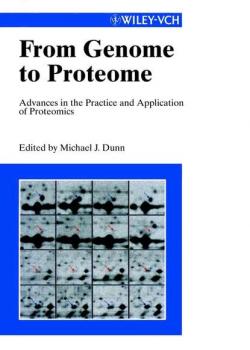ТОП просматриваемых книг сайта:
Michael Dunn J.
Список книг автора Michael Dunn J.Аннотация
Unparalleled in its scope and depth, this book brings together proteomic approaches in diagnosis and treatment from all clinical fields, including clinical toxicology. The result is a new discipline in molecular medicine that will revolutionize the treatment and prevention of cancer, stroke and other severe diseases. Following an overview of clinical proteomics, the authors look at the technologies available, before moving on to cancer, cardiopulmonary disease, diabetes and stroke. A whole section is devoted to toxicity and the work is rounded off with a discussion of the future of clinical proteomics.
Аннотация
As research on the human, animal, plant and microbial genomes matures towards descriptive fullness, the need for understanding the proteome has clearly emerged as the next major endeavor of life sciences. Proteomics – the quantitative analysis of all proteins working in a cell at a specific time and at specific conditions – provides deep insight into the highly organized network of expression, modification and degradation of proteins. Compiled in this book are reviews and research articles which describe the recent advances and perspectives of this new field of research. The articles are grouped into the following sections: – Sample Preparation and Solubilization – Developments in Electrophoresis – Detection and Quantitation – Mass Spectrometry – Proteome Data Analysis and Management – Prokayotes and Yeast – Biological Fluids – Eukaryotic Cells and Tissue – Oncology – Plants Proteomics is a new key for the functional analysis of living systems and of equal importance for basic as well as application oriented research.
Аннотация
This is the very first book to focus on this new approach that will eventually aid in developing new diagnostic markers and therapies for controlling and treating heart disease – the number-one killer in the industrialized world. Divided into two parts, the book describes not only the potentials, but also the limitations of these technologies. The editors, both well known within the scientific community, provide new insights into the biochemical and cellular mechanisms of cardiovascular disease, as well as covering the transition into clinical applications. In so doing, they highlight the various strategies and technical aspects so as to assist the growing number of researchers intending to utilize these approaches. The result is an excellent way of educating and informing graduate students, post-doctoral fellows as well as researchers in academia and industry about the latest developments in this area.



